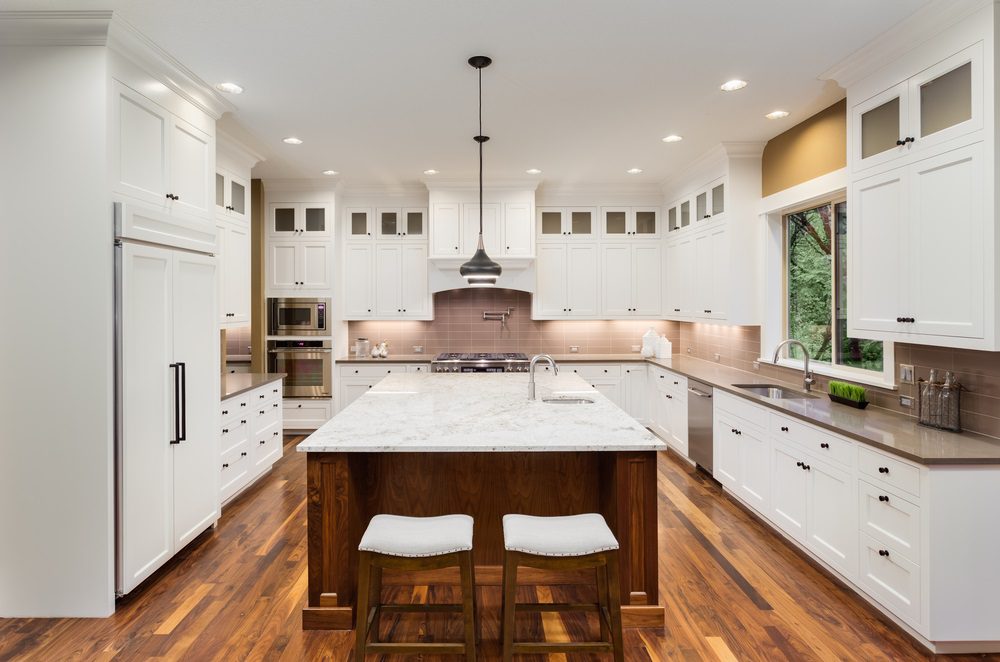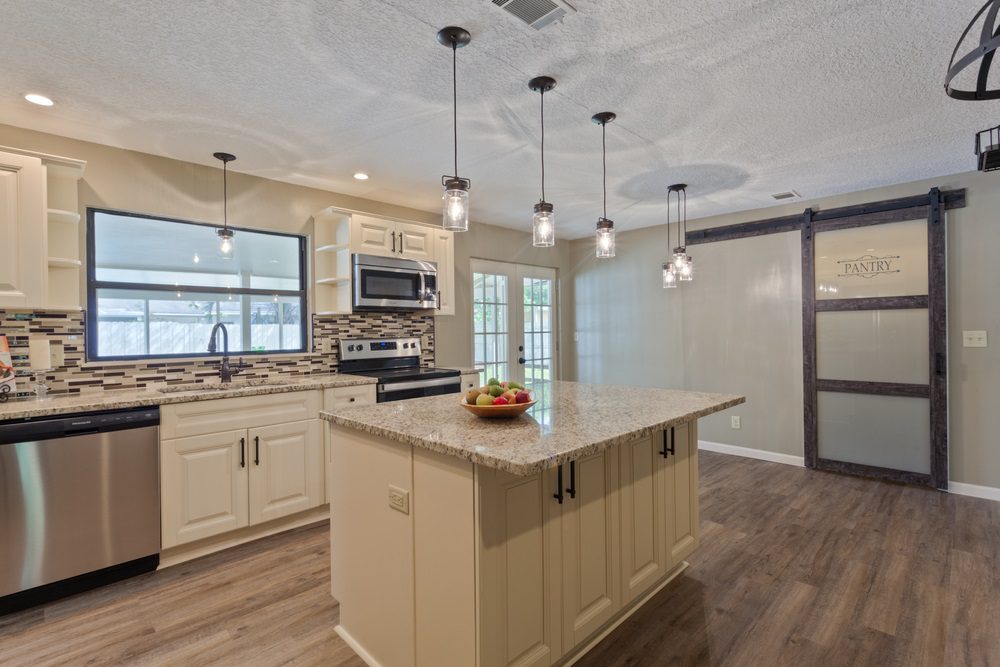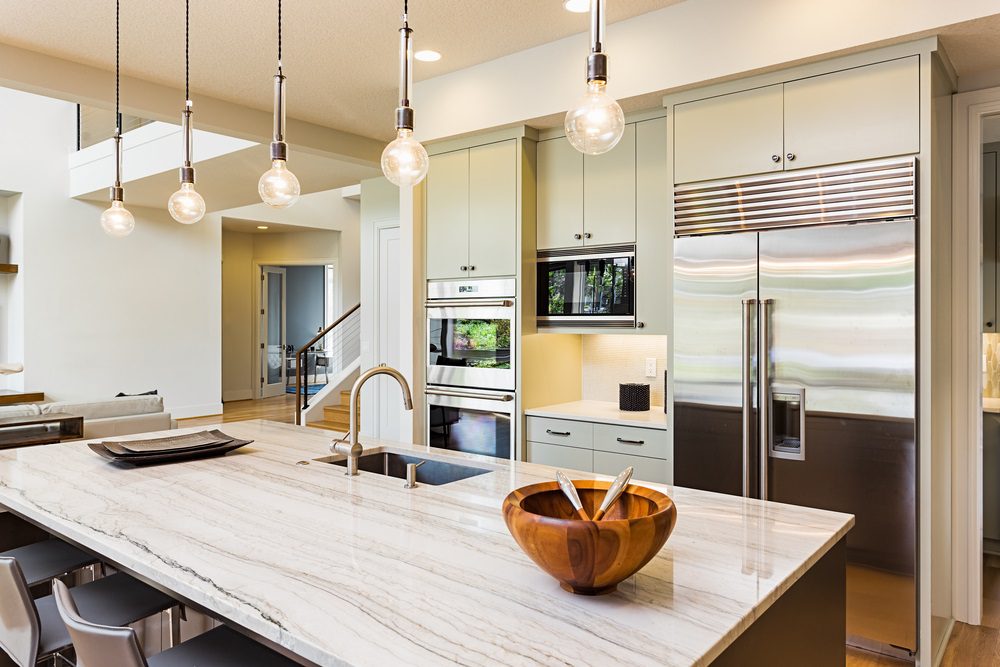What Is The Average Cost For A Kitchen Remodel in 2024?
Kicking off a kitchen remodel in 2024? You’re not alone! With more folks aiming to spice up their homes, kitchen makeovers are topping the trend charts. But here’s the deal: diving into a renovation without a clear grasp of the costs is like cooking without a recipe – it’s risky business! Whether picking out the perfect lighting fixtures, deciding on countertops and flooring, or determining if custom cabinets are in the cards, understanding the dough you’ll need to dish out is essential. It’s all about making your kitchen work better without breaking open the piggy bank. So, before you start dreaming of gas lines for that new range or how to fit in a bigger island, let’s talk about the average cost for kitchen remodel in 2024. Ready to cook up your dream kitchen with a budget in mind? Let’s dive in!
Contents
- 1 The Significance of “Average Cost For Kitchen Remodel”
- 2 Key Factors Influencing Costs
- 3 Core Components of Kitchen Remodel Costs
- 4 Strategies to Maximize Your Kitchen Remodel Budget
- 5 Planning for Different Kitchen Sizes
- 6 Navigating the Remodeling Project
- 7 The Return on Investment: Is It Worth It?
- 8 Frequently Asked Questions
- 9 In Conclusion
The Significance of “Average Cost For Kitchen Remodel”
When planning a kitchen overhaul, most homeowners start by googling “average cost for a kitchen remodel.” And here’s why: this magic number gives you a ballpark to start budgeting. Whether updating those out-of-date countertops, adding dazzling lighting fixtures, or going all out with a complete layout change, knowing the average can help you figure out what’s doable. It’s about setting a realistic frame for your dream kitchen without the surprise of hidden costs later.
Key Factors Influencing Costs
Let’s break it down – not the kitchen, but the costs. First up, labor costs. They’re like the unsung hero of your remodel, often eating up a good chunk of your budget. Then, there’s the material choice – think countertops, flooring, and those oh-so-important custom cabinets. And don’t forget size matters; remodeling a small kitchen might not cost the same as expanding a larger space. Each factor plays a big role in the final tally, so getting familiar with them is key to planning your average cost for kitchen remodel.
Core Components of Kitchen Remodel Costs
When considering average cost for kitchen remodel, Labor costs can take a big bite out of your kitchen remodel budget, consuming 20-35%. It’s essential to factor in the cost of skilled professionals who turn your dream kitchen into reality, from the intricate electrical work to the precise installation of countertops.
Labor Costs: The Backbone of Your Remodel
Labor costs are the workhorse of your kitchen remodel, potentially gobbling up 20-35% of your total budget. From plumbing and electrical work to installing those sleek countertops, the professionals you hire bring your vision to life. For instance, hiring a certified electrician to add new lighting fixtures might save you a few hundred bucks for saving on your average cost for kitchen remodel. At the same time, a full kitchen can leap into the thousands. Knowing these costs upfront helps you allocate your budget wisely, ensuring you don’t skimp where skill is crucial.
Countertops and Flooring: A Major Aesthetic Investment
Countertops and flooring are like the kitchen’s outfit—they need to look good and withstand a messy dinner party. Choices range from luxurious marble countertops to budget-friendly laminate miming wood or stone.

Similarly, flooring options span from high-end hardwood to practical, stylish vinyl. Selecting the right materials balances cost with durability and style, making your kitchen beautiful and practical.
Lighting Fixtures and Custom Cabinets: Adding Personality to Your Kitchen
Lighting and cabinets do more than function; they inject personality into your space. Whether under-cabinet lights add warmth or pendant lights make a statement, these choices can significantly influence the ambiance without draining your wallet.

While pricier than off-the-shelf, custom cabinets offer tailored solutions for unique spaces or needs. Yet, with creativity, even standard cabinets can be customized to look high-end without the high price tag.
Appliances and Special Features: Modernizing Your Space
Modern appliances not only look cool but also boost efficiency and functionality. From energy-saving dishwashers to high-tech refrigerators, investing in modern appliances can save money in the long run. Adding special features, like a gas line for a chef’s stove, requires upfront investment but pays dividends in culinary enjoyment and home value. Balancing this average cost for kitchen remodel with the overall budget ensures your kitchen is modern and functional.
Strategies to Maximize Your Kitchen Remodel Budget
To optimize your kitchen renovation budget, employ strategic planning and select materials that offer a premium look without the premium price tag, blending efficiency with elegance.
How to Save Money Without Compromising on Quality
Saving money on your kitchen remodel doesn’t mean you have to cut corners. First off, plan meticulously and prioritize changes that offer the biggest impact. Opting for DIY projects like painting cabinets or installing backsplashes can save significant costs. Moreover, consider refurbishing existing elements — refinishing floors or repurposing cabinets can give your kitchen a fresh look for less.
Also, shopping around for contractors and materials can uncover deals you might otherwise miss. Remember, smart planning and some elbow grease can yield significant savings without sacrificing quality.
Budget-Friendly Materials That Look Premium
Who says you can’t have a champagne taste on a beer budget? Today’s market is flooded with materials that look luxe without the hefty price tag. Think quartz countertops that mimic the beauty of marble or laminate flooring with the warmth of hardwood.
Composite sinks and LED lighting fixtures also offer high-end vibes for less. Exploring these alternatives means achieving the aesthetic you dream of while keeping your budget firmly on the ground. It’s all about making savvy choices that blend style with sensibility.
Planning for Different Kitchen Sizes
When tackling kitchen sizes, it’s all about strategy. For cozy kitchens, it’s maximizing every square inch with smart, stylish solutions. Got more room? Zone it out for efficiency and splash out on those statement pieces that make the space shine.
Remodeling a Small Kitchen: Making the Most of Your Space
In a small kitchen, every inch counts. Start by focusing on multifunctional features that save space without skimping on style — think pull-out cabinets, wall-mounted shelves, and compact appliances. Opt for light colors to make the space feel larger and incorporate under-cabinet lighting to brighten the room.
Don’t overlook the power of a good layout; a well-planned design can maximize efficiency and flow. By choosing materials and designs that reflect light and create an illusion of space, you can make your small kitchen look bigger and work smarter. Get more tips on how much a 10×10 kitchen remodel costs?
Considerations for Larger Kitchen Renovations
With more room to play with, larger kitchens offer the luxury of space but require careful planning to avoid overspending. The key is to define zones — cooking, washing, and socializing areas — to improve functionality. Investing in a sizable island can be a focal point for social gatherings and additional workspaces.
High-quality materials and appliances become more important in a larger space, filling more of the visual landscape. Yet, the principles of efficiency and coherent design still apply. Tailor your budget to include custom features that enhance your kitchen’s usability and aesthetics, ensuring that your investment is beautiful and practical.
Navigating the Remodeling Project
Set a realistic budget to keep your kitchen renovation on track, and watch out for those common snags that can easily trip you up.
Setting a Realistic Budget for Your Kitchen Renovation
Creating a budget that sticks starts with laying all your kitchen dreams on the table and then getting real about what you can afford. Start by listing all components of your remodel — from labor costs and appliances to lighting fixtures and custom cabinets. Next, research average costs for each and add a contingency fund for unexpected expenses; a good rule of thumb is to reserve 10-20% of your total budget for surprises.
Don’t forget to factor in the cost of dining out if your kitchen will be out of commission. Planning with precision from the get-go can help you allocate your funds wisely and avoid the stress of overspending.
Avoiding Common Pitfalls in Kitchen Remodels
Diving into a kitchen remodel is exciting, but common pitfalls can turn the process into a headache. One major misstep is underestimating costs, leading to half-finished projects or quality compromises.
Avoid this by getting detailed quotes and planning for unexpected expenses. Overlooking the workflow can result in a beautiful kitchen that’s a pain to cook in. Ensure your design considers the ‘kitchen triangle’ — the sink, stove, and refrigerator layout that optimizes efficiency. Lastly, resist the temptation to follow fleeting trends. Opt for a timeless design that suits your home’s character, ensuring your remodel stands the test of time and adds value to your home.
The Return on Investment: Is It Worth It?
Kitchen remodels offer more than just aesthetic upgrades; they’re a savvy investment in your home’s value and your everyday joy, blending financial savvy with life-enhancing transformations.
Analyzing the Value Added by Kitchen Remodels
A kitchen remodel isn’t just a facelift for your home—it’s a solid investment in your property’s value and quality of life. On the financial side, a well-executed kitchen renovation can recoup a significant portion of its cost at resale, potentially adding considerable value to your home.
It’s not just about shiny new countertops or custom cabinets; it’s about making your kitchen work better for you and appealing to future buyers.
But the real value goes beyond dollars and cents. A remodel can transform your kitchen from a purely functional space into the heart of your home, where family and friends gather and memories are made.
Upgraded appliances, efficient lighting fixtures, and a thoughtful layout can improve your daily life, making cooking and socializing more enjoyable. Whether a small update or a major overhaul, investing in your kitchen is investing in your home’s future and happiness.
Frequently Asked Questions
What Is a Realistic Budget for a Kitchen Remodel?
A realistic budget can vary widely depending on size and choices but ranges from $25,000 to $50,000 for a moderate remodel.
What Is the Most Expensive Part of a Kitchen Remodel?
Cabinetry and labor are often the most expensive parts of a kitchen remodel, making up a significant portion of the total cost.
Is $10,000 Enough for a Kitchen Remodel?
While $10,000 might be lower, it can cover smaller updates like painting, hardware changes, and possibly new appliances or countertops, depending on your choices.
Does Kitchen Remodel Increase Home Value?
Yes, a kitchen remodel can significantly increase home value, often offering a strong return on investment, especially if the new design appeals to potential buyers.
In Conclusion
Mastering a kitchen remodel in 2024 is about wise budgeting and smart choices. Keep an eye on costs, from labor to materials, and embrace budget-friendly yet stylish options. Remember, a touch of DIY and planning for surprises can go a long way. Aim for a timeless kitchen that enhances your home’s value without draining your wallet. Still confused with the right choice to make for your kitchen? Contact Unique Kitchen and Baths remodeling center in Mission Viejo to get a free consultation at our showroom.


